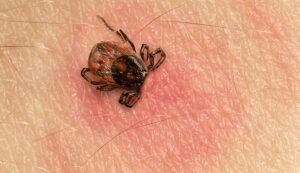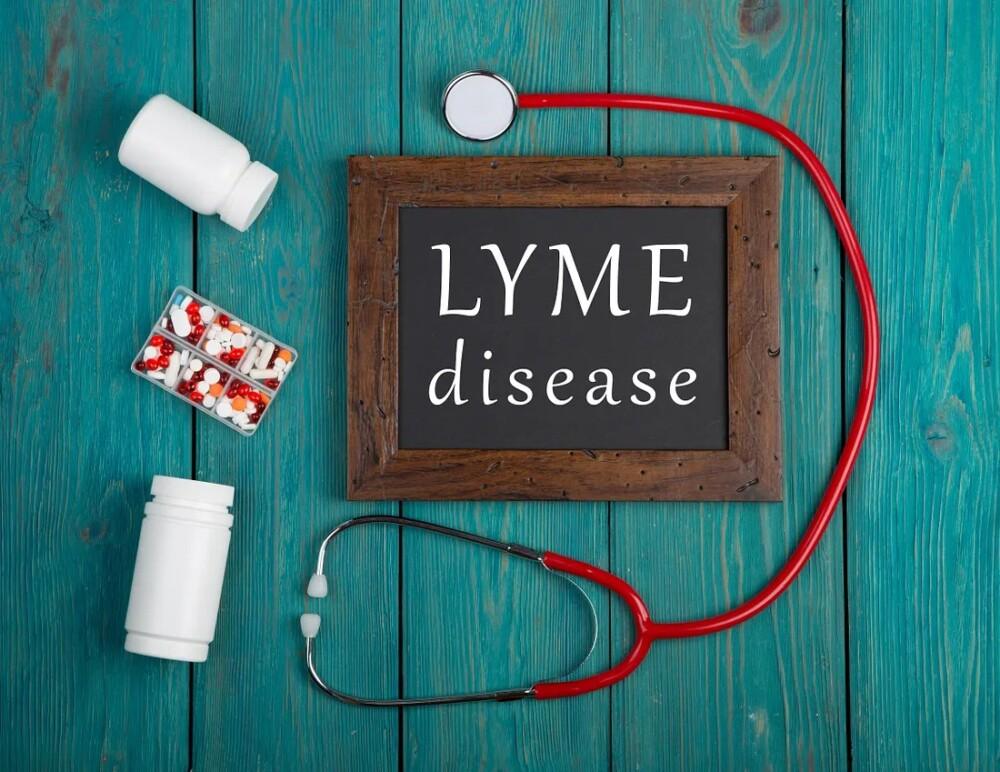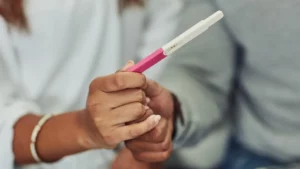PTLDS vs Chronic Lyme: Understanding the Post-Treatment Debate
Chronic Lyme and Post-Treatment Lyme Disease Syndrome (PTLDS) sound similar, but the terms are used differently. Both refer to the symptoms one may experience after recovering from Lyme disease. However, one is outlined by the CDC, whereas the other is mostly used by patients and functional medicine.
These definitions hold great importance because they affect how one interprets the symptoms. They influence whether you’re offered or denied treatment and how seriously a provider takes you.
This article will put the two in comparison so that you understand the post-treatment debate. This way, you know for sure that you get the appropriate treatment for your needs.
Defining the Terms — Why Language Matters
Chronic Lyme disease and PTLDS have different definitions and functions depending on who uses them. This affects the type of treatment you get and guides the pathway toward recovery.
What Is PTLDS?
Post-treatment Lyme disease syndrome, or PTLDS, is a term that the CDC uses to describe symptoms after Lyme treatment.
According to CDC data on chronic symptoms and Lyme disease, an average of 5-10% Lyme patients develop PTLDS. Symptoms last 6 months or more after the antibiotic treatment and are not solved with continued therapy.
PTLDS patients experience a series of symptoms such as:
- Excessive fatigue that does not resolve with rest
- Brain fog, which affects their ability to focus
- Muscle and joint pain that’s either intermittent or migratory
- Mood disruptions such as depression and anxiety
The symptom duration depends on the patient. For some, it lasts for a couple of months post-treatment. For others, it lasts for years.
Symptoms can be severe, depending on the patient. That said, the CDC and conventional medicine label it as “post-infectious.” This means that the infection has been removed from the body and there’s no further need for antibiotics.
Patients enter symptom management protocols after they are labeled with PTLDS. However, they do not receive a cure that addresses the root of the problem. They keep suffering because the doctors label the condition and dismiss their discomfort.
What Is Chronic Lyme?
Chronic Lyme disease is a broader version of PTLDS that is used by patients and naturopaths to describe lingering Lyme symptoms.
While PTLDS covers the symptoms after being treated, chronic Lyme symptoms may include the following:
- Untreated Lyme infections that went undiagnosed in their acute state
- Lyme infections that were diagnosed late due to misattributed symptoms
- Ongoing illnesses caused by immune dysfunction, co-infections, and more
- Recurring symptoms that keep showing up despite being treated
Chronic Lyme disease was recognized by the International Lyme and Associated Diseases Society (ILADS) as a legitimate illness. The organization promotes flexible diagnostics and treatments that go beyond CDC guidelines.
According to ILADS, patients can remain ill even after taking a 30-day antibiotic course. This is often due to evasion tactics, where the bacteria hide in the tissue. That said, Borrelia burgdorferi is also known for its biofilm formation ability, which protects it from antibiotics.
Incomplete antibiotic penetration allows the bacteria to linger and multiply again in the body. This could cause the infection to either become active or enter dormancy in the tissue. The bacteria often reactivate whenever there’s a dip in the immune system.
What Causes Symptoms to Persist After Treatment?

Symptoms persist either because of lingering bacterial presence or continued inflammatory response. It’s important to determine the cause so that you receive the correct treatment.
Lingering Infection or Immune System Chaos?
Practitioners connected to the ILADS community believe that lingering infections are often responsible for the persisting symptoms. In this case, the bacteria adopt a stealth mechanism and evade full eradication. This lets them survive in the tissue, despite receiving antibiotic treatment.
Mechanisms that support bacterial evasion include the following:
- Biofilms: Protective shields that defend the Borrelia bacteria from immune cells and antibiotics. It leads to a persistent infection over time.
- L-Forms: Different versions of the bacteria that have lost their cell walls. This gives them more resistance to antibiotics.
- Stealth Mechanism: The bacteria’s ability to enter cyst form. This is a dormant state that reactivates if the conditions are favorable.
The Borrelia bacteria lie low in the body thanks to these mechanisms. This leads to low-grade infections and even relapses, despite completing the treatment.
The CDC supports a different theory than ILADS does. According to the former, symptoms persist due to immune dysregulation. The immune system overreacts because of the bacterial remnants, even if there aren’t any viable, live cells left.
The theory is that the body attacks itself to restore balance, thinking that it’s still infected. This leads to symptoms such as fatigue, pain, and potential cognitive issues.
The complexity of recovery is acknowledged in both circumstances. However, opinions differ on whether or not retreatment is necessary.
What the Research Shows — And Doesn’t
Research is supportive for both sides but also conflicting. Clinical trials showed improvement in patients who received long-term antibiotics. However, some groups saw no change and continued experiencing symptoms.
For example, studies at New England Medical Center on 78 seropositive patients and 51 seronegative ones showed that prolonged treatment may not necessarily help. Both groups were treated for Lyme, but had persistent muscle pain, fatigue, and neurocognitive issues.
Half of the patients received 2g of intravenous ceftriaxone every day for 30 days. After that, they received doxycycline for the next 60 days. The other group received matching rounds of treatments, but as a placebo.
There was no visible difference between the placebo and the real-antibiotic group. This supports the CDC’s claim that there is no active infection. A NIH study on persistent symptoms after treatment for Lyme disease by Adriana Marques also showed no sign of existing infection, but patients improved from long-term treatment.
For this reason, the NIH and CDC focus on symptom management. Retesting and retreatment are presumably unnecessary, since there is no active infection. Even if new research supports the theory of a grey area, doctors continue to limit the treatment.
That said, studies led by Felipe C Cabello at the New York Medical College on 476,000 patients show that 20% treated patients experience lingering infections. The bacteria survived antibiotic treatments through biofilm formation. This lets them linger in a metabolically active state.
What Mainstream Medicine Recommends
Mainstream medicine recommends no longer administering antibiotics post-infection. On the other hand, naturopaths believe that Lyme infections are complex. Borrelia burgdorferi is capable of evading full eradication, which makes an active infection likely.
CDC and IDSA Guidelines
CDC and IDSA do not support the long-term use of antibiotics in cases of persistent Lyme disease. Both institutions see PTLDS as a post-infectious state. Their treatment guidelines involve addressing the symptoms rather than looking for further infections.
Here’s how treatment generally goes:
- Doctors follow a diagnostic model that labels PTLDS as a non-infectious condition
- Symptoms such as brain fog, fatigue, and pain are categorized as post-infectious
- Additional testing or further antibiotic treatment is denied
- Patients are recommended physical therapy, sleep support, and pain management
Doctors follow a specific model and do not recognize chronic Lyme. This causes patients to disagree with their diagnosis, feeling like their illness is dismissed.
The Gap in Care Patients Face
The strict framework creates a gap in patient care, especially for those with complex cases. Many patients are dismissed and told that it’s “all in their head.” This especially happens when the test results are negative or offer vague results.
The problem is that, according to data from the University of Amsterdam, only about 50% of ELISA test results are accurate. Medical providers who don’t specialize in Lyme may not know this and could dismiss a patient’s discomfort.
Referrals to specialists are frequently delayed because patients experience misdiagnosis. This plants the seed of medical gaslighting, which causes the patients to doubt their beliefs (despite the pain being real).
Lyme misdiagnosis stories are common, especially since chronic Lyme and PTLDS resemble the common flu. The inadequate treatment causes the patients to struggle in the long run. Many of them turn to naturopathic care to receive second opinions.
The Naturopathic Perspective on Chronic Symptoms
The naturopathic perspective believes that the Borrelia bacteria continue affecting the body even after technical healing. This is why it views the patient journey as a big picture.
The goal is not just to use antibiotics to take the bacteria out, but to support the body and regulate your system.
Supporting the Body Beyond Antibiotics
Naturopathic care focuses on healing the entire body. The right herbs support the healing process, whereas the appropriate treatment rebuilds the body’s resilience. Below are some common treatment protocols:
- Herbal Antimicrobials: Doctors recommend botanicals such as Japanese knotweed, cat’s claw, and garlic to take out a lingering infection. This reduces complications caused by co-infections.
- Detox Support: Liver and lymphatic support herbs, such as burdock root and milk thistle, reduce the toxin overload. Approaches like hydration, saunas, and sweating protocols further aid this process. Also bio-therapeutic drainage to open the pathways of elimination, called the emunctories.
- Anti-inflammatory Support: Naturopaths use natural remedies for Lyme, such as curcumin, omega-3, and quercetin, to decrease systemic inflammation. This restores balance to the immune signals.
- Gut-Immune Axis Support: Antibiotics during Lyme treatment disrupt barrier function and microbiome diversity. Naturopaths frequently prescribe probiotics and prebiotics while suggesting potential dietary changes. They will even do comprehensive stool analysis to see your microbiome and what is needed.
- Co-Infections: Naturopaths screen for potential co-infections such as Bartonella, Babesia, and Ehrlichia. These can complicate symptomatology while prolonging the recovery.
- Mitochondrial Repair: Symptoms such as brain fog, fatigue, and muscle aches suggest a potential mitochondrial dysfunction. Agents such as magnesium and acetyl-L-carnitine and ubiquinol support cellular resilience in the long term.
These treatments are acceptable for long-term use and promote the body’s natural healing capabilities. Naturopaths update treatment plans based on the symptoms a patient presents.
Patient-Centered Diagnosis and Recovery
Patient-centered diagnosis, also referred to as clinical diagnosis, relies on things such as symptoms and patient history to deliver a verdict. This is particularly effective when the tests are negative, but patients keep experiencing symptoms.
Naturopaths bridge the gap by listening, evaluating, and acting. Here’s what they rely on:
- Symptom patterns: Flare cycles, timing, and treatment response.
- Patient history: Immune challenges and tick exposure.
- Functional testing: Micronutrient status, gut panels, mitochondrial markers
- CD57 lab testing: A common marker that suggests chronic Lyme
Patients describe symptoms during an appointment and advocate for the right treatment. At the same time, doctors adjust the protocols as needed, monitoring the response.
PTLDS, Chronic Lyme, and Long COVID — A New Lens
PTLDS and chronic Lyme disease are seen differently, with long-COVID becoming broadly recognized. Post-viral syndromes are no longer dismissed as much, which has significantly shifted the debate.
How Post-Viral Syndromes Are Shifting the Debate
Post-viral syndromes are shifting the debate because they put persistent infections into a different light. With global health bodies now recognizing long COVID, they can’t say that chronic Lyme does not exist. That said, it also raises several complications.
Studies at Northwestern University show that about 14% of patients who were treated early for Lyme will still develop PTLDS. The condition holds similarities to long COVID. Here, the persistent post-viral syndrome encourages a strong immune response, triggering symptoms such as:
- Severe fatigue that doesn’t go away even after resting
- Cognitive challenges and difficulties in focusing
- Muscle pain
- Arthritis-like symptoms
- Mood changes and sleep issues
The symptoms of PTLDS and chronic Lyme mirror not only long COVID, but also Encephalomyelitis or Chronic Fatigue Syndrome (CFS). However, as research evolves, the public gains more understanding of the complexity of this chronic illness.
Once, they were easily dismissed. Now, they are slowly but surely starting to receive the attention they deserve.
In our experience…
If a patient was never treated for an acute tick bite, or they had no recollection of being bit and they present with symptoms that elicit more thorough lyme testing, we do include anti-microbials in our treatment plans. In a Naturopathic perspective, the infection is still lingering and disseminated into many organs systems at this point. With that said, it has to be at the right time because if they have chronic lyme disease and haven’t been treated for lyme for several years, we have to first work on supporting the system before we do any intense detox or anti-microbial protocol. We do often see great success just by supporting the body with proper nutrition, movement, repleting vitamin deficiencies- even before we get to the “killing” part of our protocol (where we use certain herbals). This goes to show that you must treat the person, no matter the disease. If the person’s body is strong and their immune system is supported, they start to feel better even before we “go for the bug”. I have seen some patients get 80% better or more just from supporting their body because afterall, the best defense against any pathogen is your own immune system.
FAQ: PTLDS, Chronic Lyme, and What to Do Next
1.How Do I Know If I Have PTLDS or Chronic Lyme?
You know if you have PTLDS or chronic Lyme based on the existence of a chronic infection. CDC and most doctors label it as PTLDS if you received antibiotics and still feel the symptoms after several months.
However, naturopaths could diagnose it as chronic Lyme based on PCR tests and your treatment history. Lyme cases that were diagnosed late usually get the chronic Lyme diagnosis.
2.Should I Be Retested After Treatment?
Conventional medicine doesn’t usually retest after the treatment. It’s assumed that the antibodies will remain there for years, so there’s no need.
However, naturopaths may choose to retest, to see how the infection progresses or chooses to linger. They could also use it to test for co-infections, immune status, or potential inflammation.
3.Do Long-Term Symptoms Mean the Infection Is Still Active?
Long-term symptoms don’t always mean that you have an active infection. Patients who catch the disease late could indeed experience a low-level persistent infection. Others could just experience an immune system dysregulation.
Testing and clinical evaluation alike are essential to determine which is which. If the immune system responds to antimicrobials, there’s a chance the infection is still active. If that’s not the case, the body is trying to recover after the stress it’s been through.
4.Can Herbs or Lifestyle Changes Help Even If Tests Are Negative?
Herbs, anti-inflammatory protocols, and lifestyle-changing tactics such as stress management can help support the body. Integrative medicine restores proper balance and function, even if the tests are technically negative.
Keep an eye on how the body responds. It tells you whether or not you are improving, even if the tests don’t offer much information.







